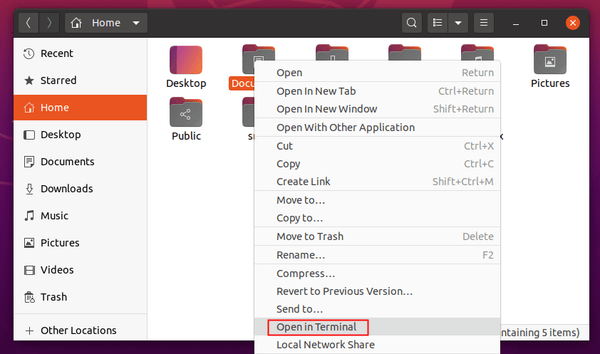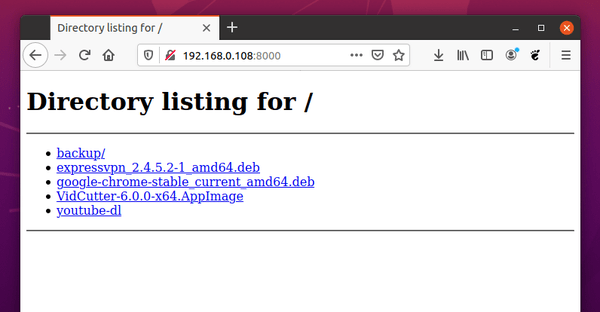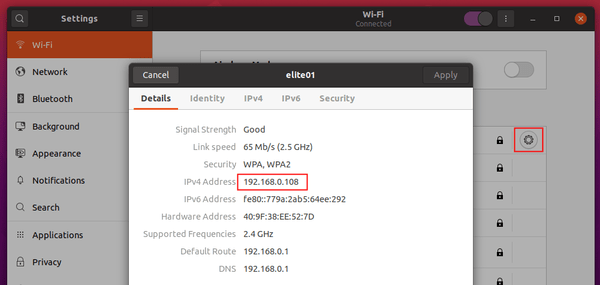![]()
There are quite a few ways to transfer files over home network. One of the easiest ways is to run a single python command in terminal.
Python contains a script that sets up simple http server. No need to install anything, and even no internet connection required.
1. Simply right-click on the folder that contains the files you want to transfer, then select ‘Open in Terminal‘

2. When terminal opens, run the single command:
python3 -m http.server

UPDATE: You can specify the listening port (e.g., 9900) if you get “Address already in use” error, by running command:
python3 -m http.server 9900
That’s it!
Now any device in the same network can access the http file server by going to (change 8000 if you specified another listening port): http://server_ip:8000

In addition, you may run python3 -m http.server & instead to start the http server in background, so the terminal window can be closed.
To check your IP address, go to Settings > Wi-Fi (or Network), click on the gear button after your connected network and check the IPv4 Address.















I asked and they delivered!
https://redmine.audacious-media-player.org/boards/1/topics/2555
https://audacious-media-player.org/download
Congratulations, Panda Jim, now you are officially maintaining Audacious PPA.
Thanks and keep up the excellent work!
Thank you for inspiring me!
this is brilliant. Simple, efficient and elegant.
Thanks much Ji, for such a simple explanation and useful post. Bryan
Thanks Ji, exactly what I need. Your article pointed me to http.server. Thank you!